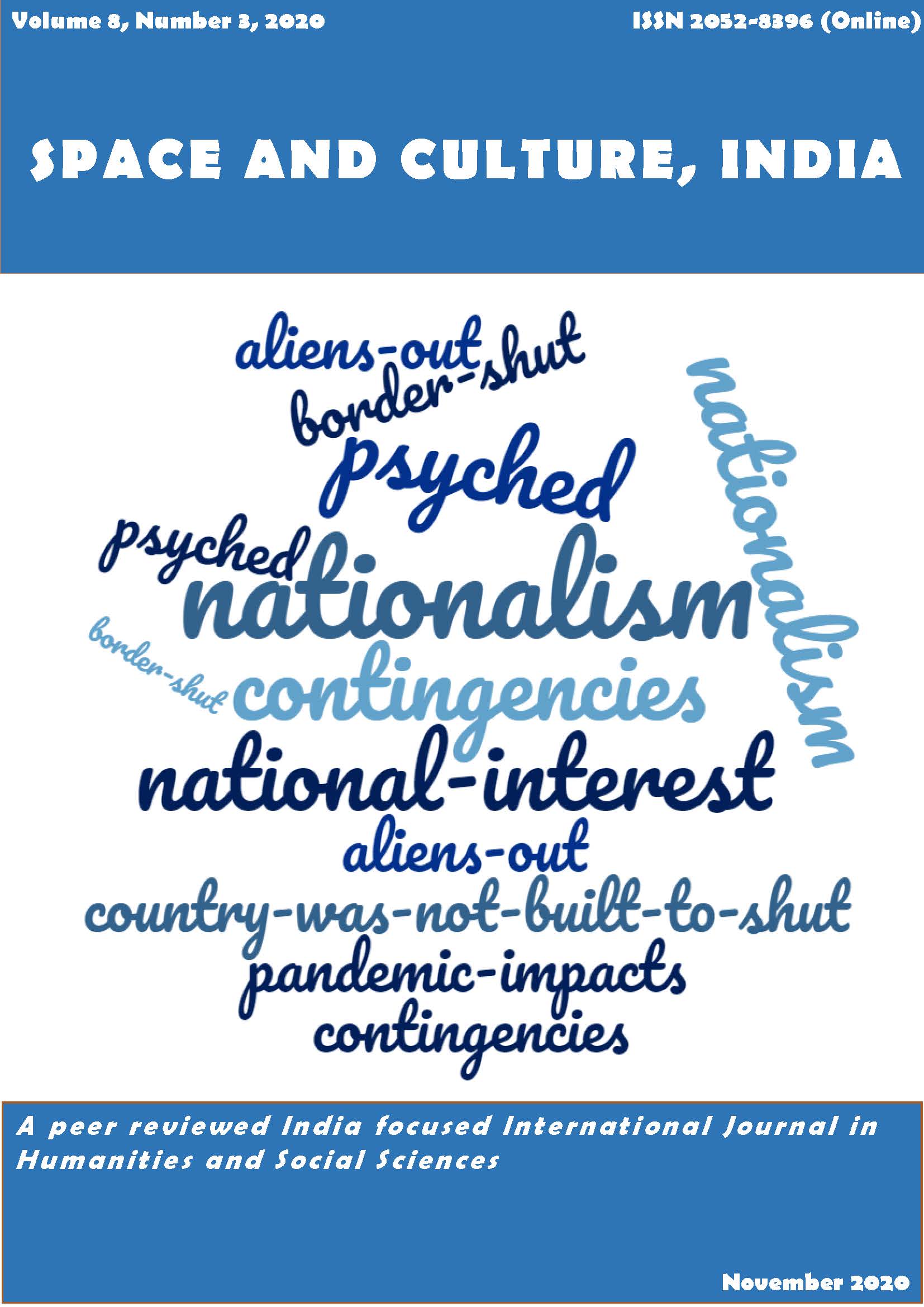Homogeneity within Heterogeneity: Insights from the Culture of West Kameng of Arunachal Pradesh

Abstract
As the world moves faster towards a homogenised culture, the logic of keeping heterogeneous properties of culture seems asynchronous. The liberalisation, privatisation, and globalisation (LPG) model of growth and development of states throw challenges to the indigenous cultures and traditions for a state like India where diverse traditional moorings, cultural systems, religious practices, and ethnic variations stand core to its integrity. In the rat-race for development, indigenous cultures and traditions of a state are enmeshed within ‘accept the global go and lose insularity’ or ‘decline it to stay homogeneous’. In a homogeneous societal culture, the underlying values and beliefs are squarely believed, shared, and practised compared to many different values and beliefs professed by diverse population groups in the case of a heterogeneous one.
Arunachal Pradesh with twenty-six major tribes and numerous sub-tribes at its credit stands incredible for its ethnicity, tribal indigenous identities, and cultural homogeneity. As is the number, so is the variation with indigeneity and nuances of culture practised by the tribes. The cultural diversity of the people differs from tribe to tribe even if they reside within the same geographical area. The district West Kameng is abode to six different tribes—Akas, Buguns, Mijis, Monpas, Sajalongs, and Sherdukpens living in close proximity with each other. However, their traditional culture with regards to their religious practices, dress, customs, rituals, languages, dialects, fairs, and festivals is starkly heterogeneous. Most remarkable is the criterion that heterogeneity hardly aberrates homogeneity within themselves. The focus of the present study is to highlight such a homogeneity-heterogeneity aspect of the culture of West Kameng.
Keywords
Homogeneity, Heterogeneity, Pluriculturalism, West Kameng, Arunachal Pradesh, India
References
- Abid, Mohammad (2004). Political modernisation : The concept, contours and dynamics. The Indian Journal of Political Science, 65 (4) (Oct.-Dec.), pp. 590-602.
- Bandura, A. (1986). Social foundations of thought and action: A social cognitive theory. Englewood Cliffs, N.J.: Prentice-Hall.
- Bandura, A. (2008). Social cognitive theory of mass communication. In J. Bryant & M. B. Oliver (Eds.), Media Effects: Advances in Theory and Research. Routledge.
- Barthakur, Raju (2006). Winds of change: Arunachalee in tradition and transition. Indian Folklife, Serial No.22, July.
- Behaviorial Change Theories (2020,22 October). The Social Cognitive Theory. https://sphweb.bumc.bu.edu/otlt/MPH-Modules/SB/BehavioralChangeTheories/BehavioralChangeTheories5.html#headingtaglink_1
- Bhatti, Anil (2009). Culture, diversity and similarity: A reflection on heterogeneity and homogeneity. Social Scientist, 37(7-8), July-August, New Delhi.
- Bloch, Ernst (1977). Nonsynchronism and the obligation to its dialectics. (first published in German 1932), Trans. Mark Ritter, New German Critique. Duke University Press, No. 11. DOI: https://doi.org/10.2307/487802
- Bose, M. L. (1997). History of Arunachal Pradesh. Concept Publishing Company.
- Cambridge English Dictionary (2020). https://dictionary.cambridge.org/dictionary/english/culture
- Carl Schmitt, Verfassungslehre, Berlin, 1928.
- Chaudhuri, Sarit K. and Chaudhuri, Sucheta S. (2016). Beads of Arunachal Pradesh: Emerging Cultural Context, Niyogi Books.
- Cole, Nicki Lisa (2019). Understanding Acculturation and Why It Happens. ThoughtCo. https://www.thoughtco.com/acculturation-definition-3026039
- Deleuze, Gilles, Guattari, Felix, & Plateaux, Mille, (1990), Paris. (Engl. A Thousand Plateaus, Capitalism and Schizophrenia, Translated by Brian Masumi, 1988).
- Enz, C. A. (1986). New directions for cross-cultural studies: Linking organizational and societal cultures. In R. N. Farmer (Ed.), Advances in International Comparative Management: A Research Annual, Vol. 2, JAI Press.
- Gardner, Vinita Kaul (2019), The thrilling tales of the tribals of Arunachal Pradesh. Sangya Chaudhury (Ed.). Tribal Culture of India, New Delhi:The Indian Trust for Rural Heritage and Development (ITRHD).
- Gazetteers of India (1996) - Arunachal Pradesh, East Kameng, West Kameng and Tawang Districts, Shillong.
- Grewal, D. S. (1997). Tribes of Arunachal Pradesh: Identity, Culture and Languages, Delhi: South Asia Publications.
- Grugel, Jean, Riggirozzi, Pia, & Thirkell-White, Ben (2008). Beyond the Washington consensus? Asia and Latin America in search of more autonomous development. International Affairs, 84(3), 502-503. DOI: https://doi.org/10.1111/j.1468-2346.2008.00720.x
- Gy, Pierre M. Ed. (1992). Logical analysis of the concepts of homogeneity and heterogeneity. Data Handling in Science and Technology, Volume 10, Elsevier. https://www.sciencedirect.com/science/article/pii/S0922348708700765
- Hendricks, Beth. Marshall McLuhan & the Global Village Concept. study.com. https://study.com/academy/lesson/marshall-mcluhan-the-global-village-concept.html
- Joshi, H. G. (2005). Arunachal Pradesh: Past and Present. Mittal Publications.
- Mibang, Tamo and Behera, M. C. (Ed.) (2007). Tribal Studies: Emerging Frontiers of Knowledge. Mittal Publications.
- Nadimpally, Lasya (2017). Arunachal Pradesh: tribes & traditions. Outlook Traveller. https://www.outlookindia.com/traveller/ot-getaway-guides/arunachal-pradesh-tribes-traditions/
- Nath, Jogendra (2000). Cultural Heritage of the Tribal Societies, Vol. I: The Adis, Omsons Publications.
- Nath, Jogendra (2005).The Cultural Heritage of Tribal Societies, Vol. II: The Monpas, Omsons Publications.
- Nath, Jogendra (2012).The Cultural History of the Mijis of Arunachal Pradesh. Prithibi Prakashan.
- Nath, Jogendra (2013).Economic growth of Arunachal tribes in relation to their cultures through the ages. In H. Lasa, S. C. Nayak & N. Thupten (Eds.), Tribal Area Development and Northeast India. Adhyayan Publishers.
- Nath, Jogendra (2014). Cultural History of the Sherdukpens of Arunachal Pradesh. Ajir Pratinidhi Publication.
- National Informatics Centre (2020). Culture and heritage. West Kameng District. Government of Arunachal Pradesh, Ministry of Electronics and Information Technology, Government of India. https://westkameng.nic.in/culture-heritage/#:~:text=The%20entire%20population%20of%20the,other%2C%20living%20there%20separate%20lives.
- Nimachow, Gibji (2013). The Akas: Land and People. Commonwealth Publishers.
- O’Byrne, Darren J. and Hensby, Alexander (2011). Globalization: The global village. Theorizing Global Studies, January, DOI: 10.1007/978-0-230-34506-5_2 DOI: https://doi.org/10.1007/978-0-230-34506-5_2
- Pandey, B. B. (1996). The Buguns: A Tribe in Transition. Himalayan Publishers.
- Parekh, Bhikhu (2009). Logic of identity. Politics, Philosophy & Economics, 8(3), 267-284. DOI: https://doi.org/10.1177/1470594X09105387
- Pathak, Guptajit and Gogoi, Raju (2008). Cultural Fiesta in the Island of Peace: Arunachal Pradesh, Mittal Publications.
- Singh, K. S. (Ed.) (1995). People of India- Arunachal Pradesh, Vol. XIV. Seagull Books.
- Singh, Sudhir Kumar & Riddi, Ashan (2017). Pre-Colonial History and Traditions of Arunachal Pradesh, DVS Publishers.
- Subrahmanyam, Sanjay (1997). Connected histories: Notes towards a reconfiguration of early modern Eurasia. Modern Asian Studies, 31(3), 735-762. DOI: https://doi.org/10.1017/S0026749X00017133
- Tylor, Edward (1871). Primitive culture. Vol 1. J.P. Putnam's Son.